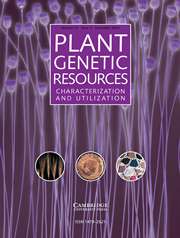No CrossRef data available.
Article contents
Genetic diversity and demography of Pteridium aquilinum (L.) Kuhn in Iran
Published online by Cambridge University Press: 15 April 2025
Abstract
Pteridium aquilinum, commonly known as bracken, is a fern species distributed in temperate and subtropical regions. In Iran, it primarily grows in isolated populations in the northern regions, and its genetic structure, gene flow and population genetics are not well understood. This study aimed to investigate gene flow and genetic diversity in 11 geographical populations of P. aquilinum in Iran for the first time. A total of 133 plants from different populations were examined, and both morphological and genetic diversity were assessed using start codon targeted (SCoT) molecular markers. Results showed genetic and morphological admixture within populations, likely due to the high mobility of dispersal units in this species. Significant genetic differences were found among populations, but a high degree of genetic variability was observed within individual populations. Additionally, there was a significant correlation between geographical and genetic distances, indicating gene flow between populations. The assignment test revealed genetic admixture among plants from different populations, and Gst analysis of SCoT loci yielded Nm = 0.95, confirming gene flow among the populations. Overall, this study demonstrates that the Iranian populations of P. aquilinum maintain substantial gene flow, which may contribute to the long-term survival and adaptability of this species in the region.
- Type
- Research Article
- Information
- Copyright
- Copyright © The Author(s), 2025. Published by Cambridge University Press on behalf of National Institute of Agricultural Botany


